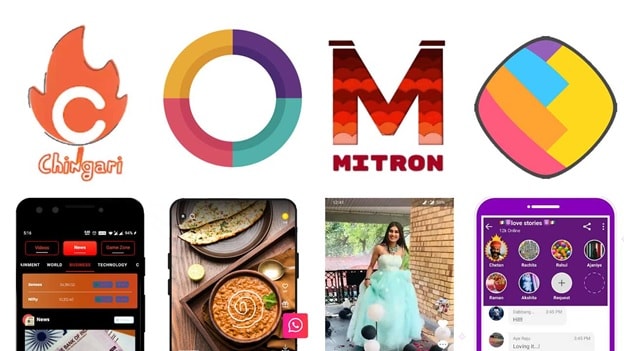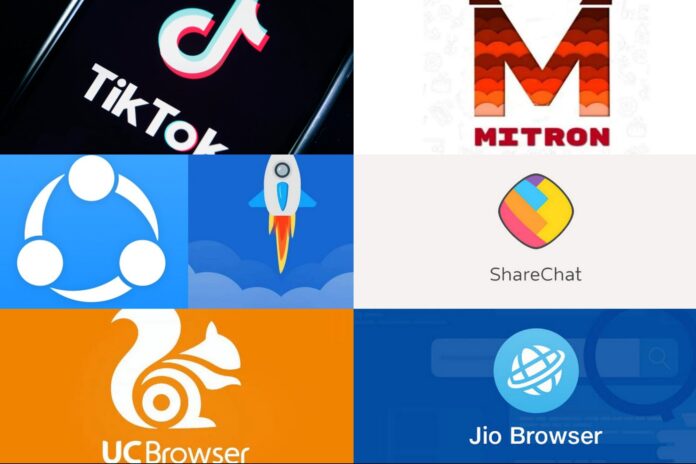A Billion-Dollar Market Gap – and a Missed Opportunity?
When India banned TikTok in June 2020, over 200 million Indian users lost access to a platform that had democratized fame and allowed voices from every corner of India to be heard. TikTok’s influence on the Indian digital landscape was unprecedented: it connected diverse communities and gave rural and urban creators alike a platform to share content and gain visibility. This unexpected gap in the market led to an intense race among Indian tech firms to replace TikTok. Apps like Moj (developed by ShareChat), Chingari, and MX TakaTak (later merged with Moj) quickly emerged, capturing millions of downloads and billions in funding.
For example, ShareChat received $502 million in funding from prominent investors like Google and Twitter, and Moj recorded over 50 million downloads in the 45 days following TikTok’s exit. Chingari, another popular Indian alternative, was downloaded over a million times in a single day shortly after the ban. It seemed the stage was set for India to create its own viral video sensation, one that could rival TikTok both in popularity and market impact.
Yet, despite this explosive initial growth and support from both users and investors, these platforms have struggled to maintain the momentum and depth of engagement that TikTok fostered. Today, the impact of Indian short-video apps pales in comparison to the continuing global dominance of TikTok. So, what went wrong?
Funding and Downloads Aren’t Everything.
The initial response to Indian TikTok alternatives was undoubtedly promising, and with major funding rounds, these platforms seemed poised for success. But while capital is essential for early growth, it’s far from sufficient for sustained success. In recent reports from Business Standard and Forbes, experts point out that while Moj and Chingari received initial bursts of interest, their user engagement rates have steadily declined. For instance, Chingari’s downloads fell by 75% within a year after its peak, while active daily users on Moj stagnated in comparison to its rapid early growth.
Much of this comes down to the user experience. TikTok’s success wasn’t just about short videos; it was about an intuitive and captivating experience built around an incredibly sophisticated algorithm. TikTok’s algorithm was designed to personalize each user’s feed with uncanny accuracy, learning and predicting preferences to the point that each swipe felt uniquely engaging. By contrast, Indian alternatives haven’t managed to offer the same level of personalization. Users have repeatedly reported issues with content relevance, repetitive video recommendations, and a general lack of diversity in content on these Indian apps, making the experience feel stale.

The Critical Role of Algorithm and User Experience.
TikTok’s recommendation algorithm remains one of the most sophisticated in the social media world. It employs advanced artificial intelligence to continuously adapt and personalize users’ feeds. By analyzing minute details like viewing duration, engagement patterns, and user interactions, TikTok’s machine learning system curates an experience that feels fresh and customized every time.
Indian alternatives like Moj and Chingari, despite being equipped with substantial resources, have struggled to replicate this. The personalization experience falls short, and as Forbes reported in 2023, user retention rates on Moj and Chingari are significantly lower compared to TikTok’s. Chingari, for example, despite an initial boom, has seen a decline in active users due to “feed fatigue” and limited variety in content categories, a problem exacerbated by an algorithm that fails to effectively adapt to diverse user preferences.
Technical glitches, lower video quality, and limited editing features have also been recurrent issues. Reviews on the Google Play Store and Apple App Store are littered with complaints from users frustrated by buggy experiences, slow load times, and subpar video quality compared to TikTok. This discrepancy in quality has ultimately deterred users from staying on these platforms for prolonged periods.
Content Quality and Creator Ecosystem.
One of TikTok’s major achievements was its strong creator ecosystem. TikTok built a space where creators, regardless of their follower count, could thrive through an organic engagement model that rewarded creativity. Unlike platforms that prioritize established celebrities and influencers, TikTok allowed grassroots creators to achieve fame purely through the quality and originality of their content. This democratization of fame helped TikTok attract and retain a diverse community of creators, from influencers to first-time content makers.
By contrast, Indian alternatives have struggled to establish a similarly inclusive creator ecosystem. While Moj and Chingari have both made efforts to partner with popular influencers, their approach has tended to favor established figures rather than grassroots content creators. This has led to a skewed creator environment, where newer, lesser-known creators feel overshadowed by celebrity influencers.
In terms of monetization, Indian platforms have also lagged behind. TikTok offered financial incentives, brand collaborations, and creative partnerships that turned content creation into a viable career for many. While Moj and Chingari have introduced monetization features, reports from tech news platforms like Inc42 reveal that many Indian creators have found these earnings insufficient or unreliable. This lack of incentive, combined with a perceived bias toward established influencers, has driven many small creators to abandon the platforms altogether.

Innovation vs. Imitation: A Need for Unique Identity.
One of the most apparent pitfalls of India’s TikTok alternatives has been their tendency to imitate rather than innovate. While Moj and Chingari were both hailed as “Indian TikToks,” this labeling has proven to be more of a hindrance than an advantage. Users who initially downloaded these apps hoping for a similar experience were quick to realize that imitation is seldom as engaging as the original.
In terms of features, TikTok’s Douyin (its Chinese counterpart) continues to introduce new capabilities like livestreaming and integrated e-commerce, while Moj and Chingari have stayed largely static in their offerings. For instance, Douyin’s in-app shopping feature allows users to purchase items directly from live videos, a novel integration that enhances user engagement. By comparison, Moj and Chingari have not diversified their platforms in ways that capture such high levels of user interest.
Data from Sensor Tower shows that while TikTok’s daily active user engagement rate is over 30%, Indian alternatives have struggled to reach even half of that. The lack of innovative features makes these apps feel more like stagnant spaces, rather than the dynamic, evolving experience users expect from modern social media.
The Road Ahead: Is the Gap Still Bridgeable?
Indian alternatives may have missed their initial opportunity to fill the TikTok-sized void, but the game isn’t necessarily over. For these platforms to truly succeed, they will need to focus on three core pillars: technical sophistication, robust creator support, and a deep understanding of cultural context.
Technical sophistication means investing in the type of algorithm that TikTok mastered, which provides each user with a unique, adaptive experience. Creator support will require building long-term partnerships, not just short-lived brand deals, to foster loyalty among content creators. Culturally, these platforms could benefit from embracing India’s diversity rather than offering a one-size-fits-all experience. An app that understands and caters to local tastes, languages, and cultural nuances could indeed forge a unique niche in the market.
The Final Outlook- The Hard Road Ahead.
The meteoric rise—and equally swift decline—of Indian TikTok alternatives underscores a harsh truth: filling a market gap requires much more than simply occupying space. With high initial funding and enthusiastic support from users, Moj, Chingari, and other platforms seemed poised to succeed, but their failure to innovate beyond TikTok’s model has cost them dearly. As market demand begins to wane, only platforms that genuinely invest in algorithmic refinement, creator support, and cultural understanding will stand a chance.
Ultimately, the TikTok ban provided Indian apps with a rare opportunity to become household names, an opportunity that remains largely unfulfilled. Moving forward, Indian tech entrepreneurs would do well to focus less on imitation and more on creating an experience that feels uniquely theirs. If not, they risk remaining mere footnotes in the rapidly evolving world of digital media—reminders of the short-lived potential of Indian TikTok replacements that, while promising, ultimately missed the mark.

